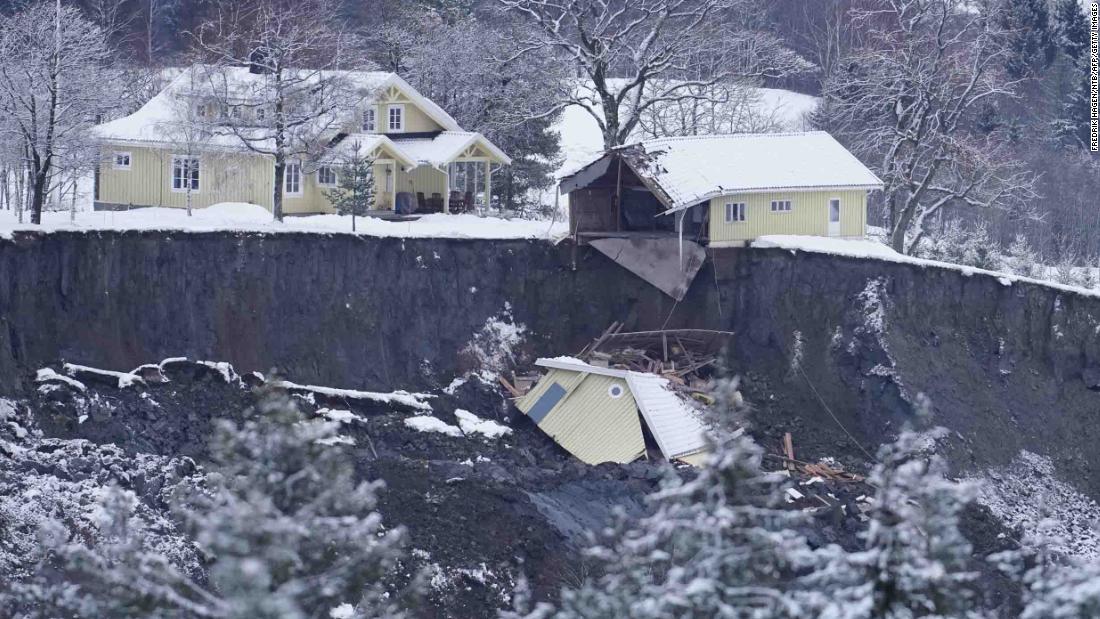“We are still in a rescue operation, which means that we can still find survivors,” said Roger Pettersen, police operations manager, at a news conference on Monday.
Seven people died in the disaster and three people are still missing, Norwegian police said.
Cold weather is working against rescue efforts, Andre Thiller, manager of health operations, said during the conference. However, he said, survivors may still be alive hidden in “landslide cavities”, which is why authorities are making sure “that all relevant cavities have been digitized before we end the effort.”
The landslide is the worst the country has seen in recent years, in terms of “number of houses involved and evacuees,” the Norwegian Directorate of Water Resources and Energy (NVE) said in a statement.
It happened in the early hours of December 30, when the mud hit Ask, located in the municipality of Gjerdrum. Images from the scene showed a collapsed slope and buildings hanging from the rim of the crater.
NVE said the sliding clay caused an “avalanche well of approximately 300 by 700 meters (980 to 2300 feet).”
“It hurts to see how the forces of nature devastated Gjerdrum,” said the country’s prime minister, Erna Solberg, on social media. “My thoughts go out to everyone affected by the landslide,” he added.
The Norwegian king and queen visited the site of the landslide on Sunday.
“The terrible incident makes a deep impression on all of us,” said King Harald V during his annual New Year’s address. “I sympathize with you who are entering the new year with sadness and uncertainty. With you who have lost their homes and who are now desperate and do not see a way forward.”
